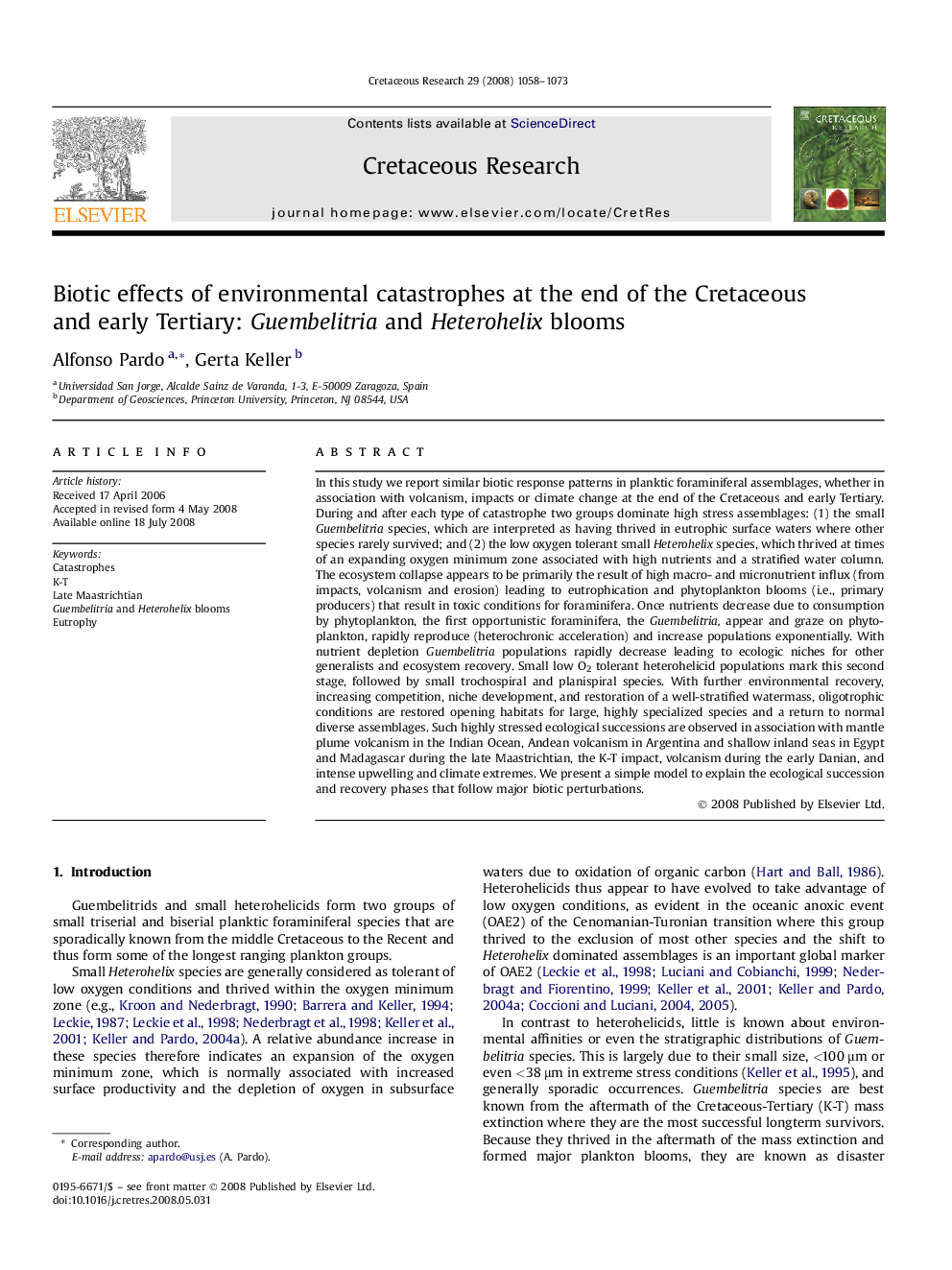| کد مقاله | کد نشریه | سال انتشار | مقاله انگلیسی | نسخه تمام متن |
|---|---|---|---|---|
| 4747717 | 1642090 | 2008 | 16 صفحه PDF | دانلود رایگان |

In this study we report similar biotic response patterns in planktic foraminiferal assemblages, whether in association with volcanism, impacts or climate change at the end of the Cretaceous and early Tertiary. During and after each type of catastrophe two groups dominate high stress assemblages: (1) the small Guembelitria species, which are interpreted as having thrived in eutrophic surface waters where other species rarely survived; and (2) the low oxygen tolerant small Heterohelix species, which thrived at times of an expanding oxygen minimum zone associated with high nutrients and a stratified water column. The ecosystem collapse appears to be primarily the result of high macro- and micronutrient influx (from impacts, volcanism and erosion) leading to eutrophication and phytoplankton blooms (i.e., primary producers) that result in toxic conditions for foraminifera. Once nutrients decrease due to consumption by phytoplankton, the first opportunistic foraminifera, the Guembelitria, appear and graze on phytoplankton, rapidly reproduce (heterochronic acceleration) and increase populations exponentially. With nutrient depletion Guembelitria populations rapidly decrease leading to ecologic niches for other generalists and ecosystem recovery. Small low O2 tolerant heterohelicid populations mark this second stage, followed by small trochospiral and planispiral species. With further environmental recovery, increasing competition, niche development, and restoration of a well-stratified watermass, oligotrophic conditions are restored opening habitats for large, highly specialized species and a return to normal diverse assemblages. Such highly stressed ecological successions are observed in association with mantle plume volcanism in the Indian Ocean, Andean volcanism in Argentina and shallow inland seas in Egypt and Madagascar during the late Maastrichtian, the K-T impact, volcanism during the early Danian, and intense upwelling and climate extremes. We present a simple model to explain the ecological succession and recovery phases that follow major biotic perturbations.
Journal: Cretaceous Research - Volume 29, Issues 5–6, October–December 2008, Pages 1058–1073